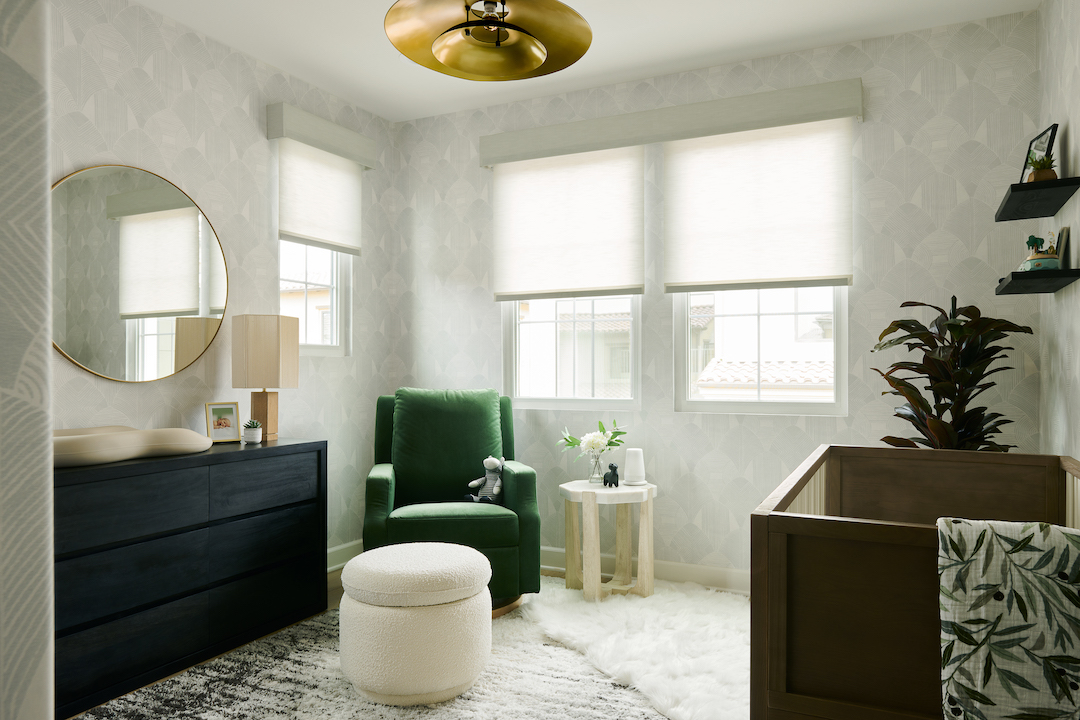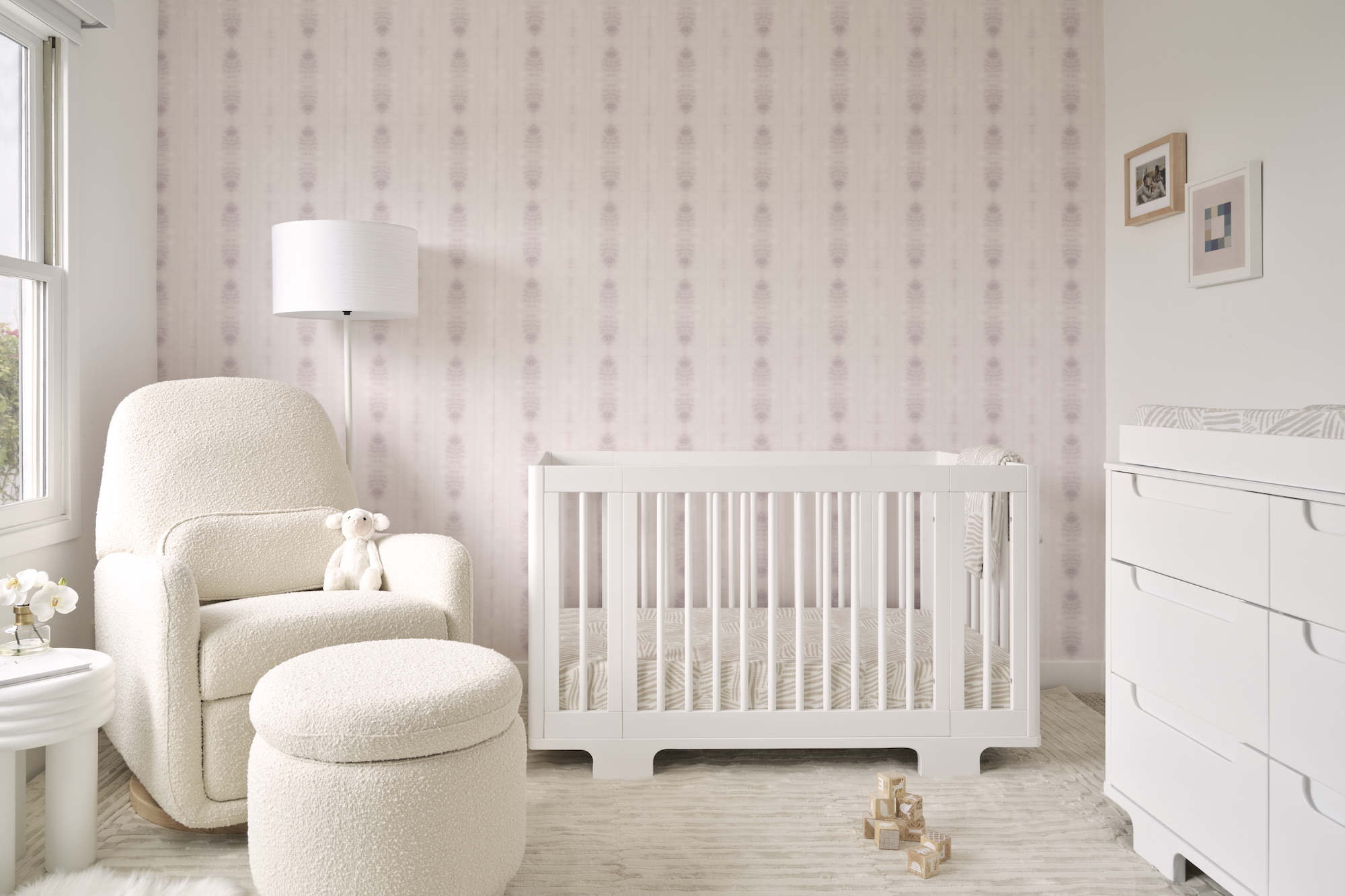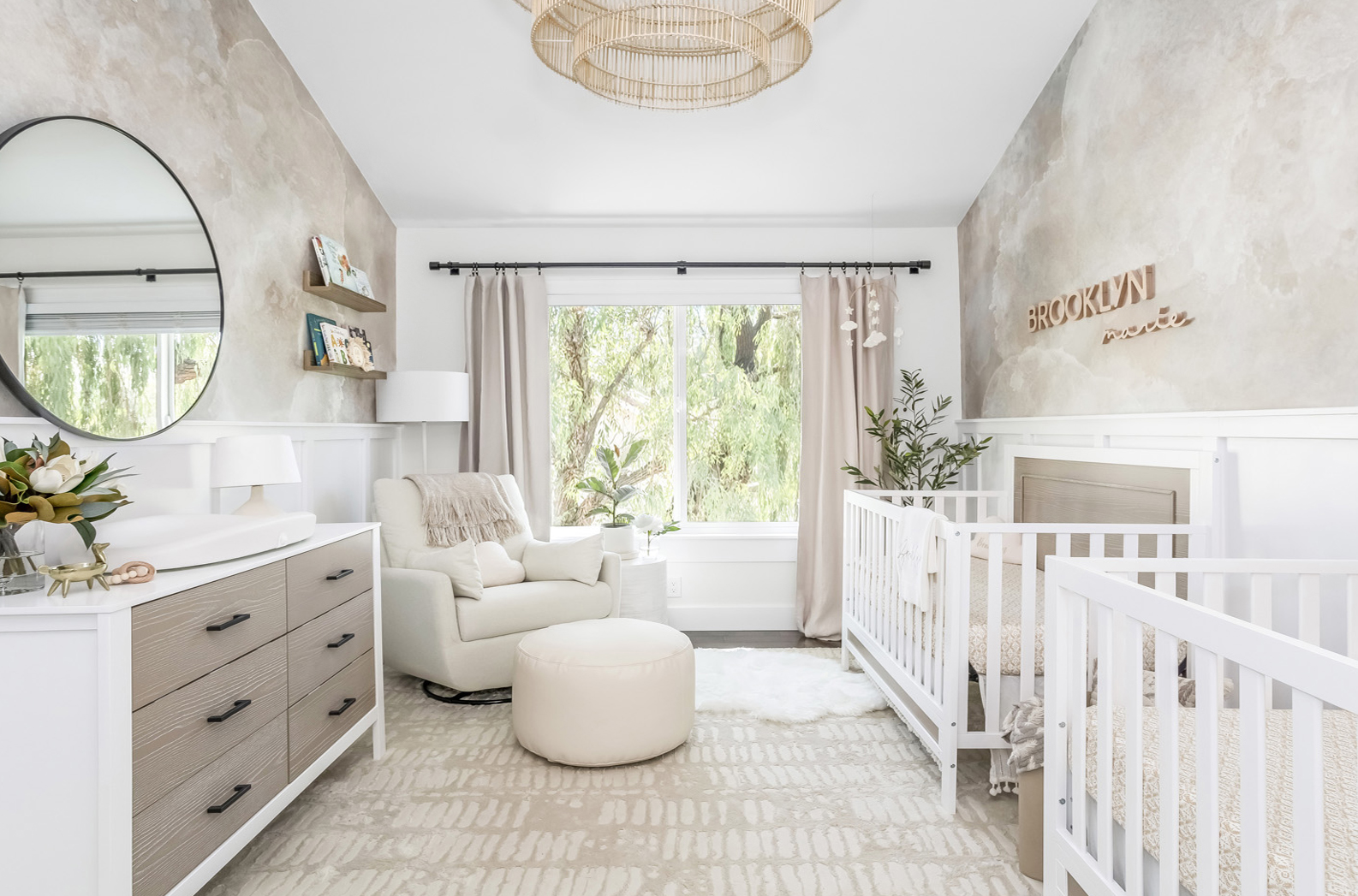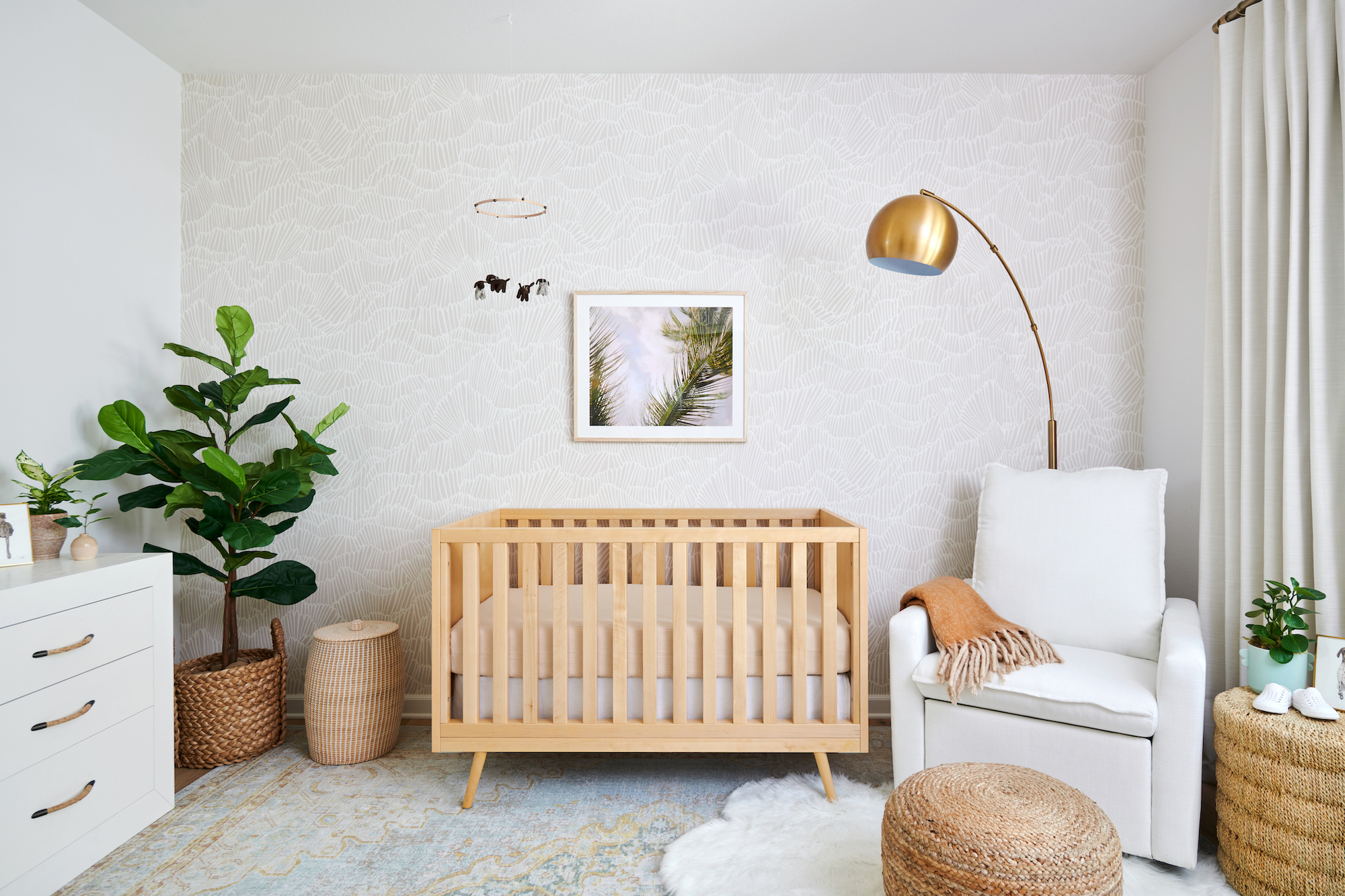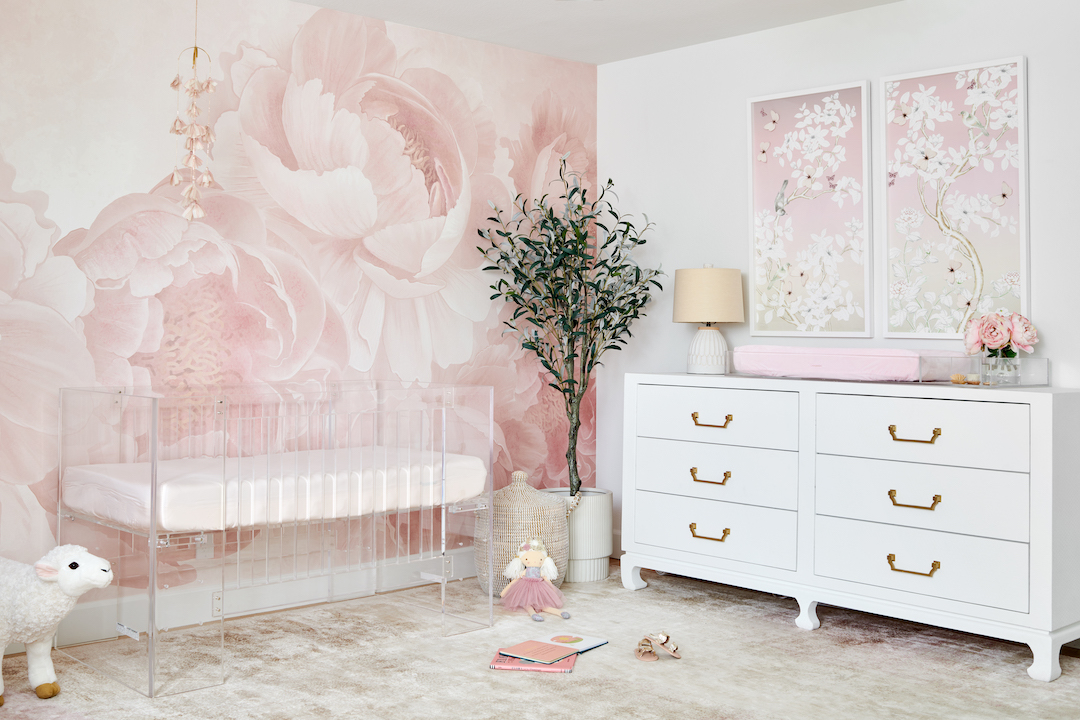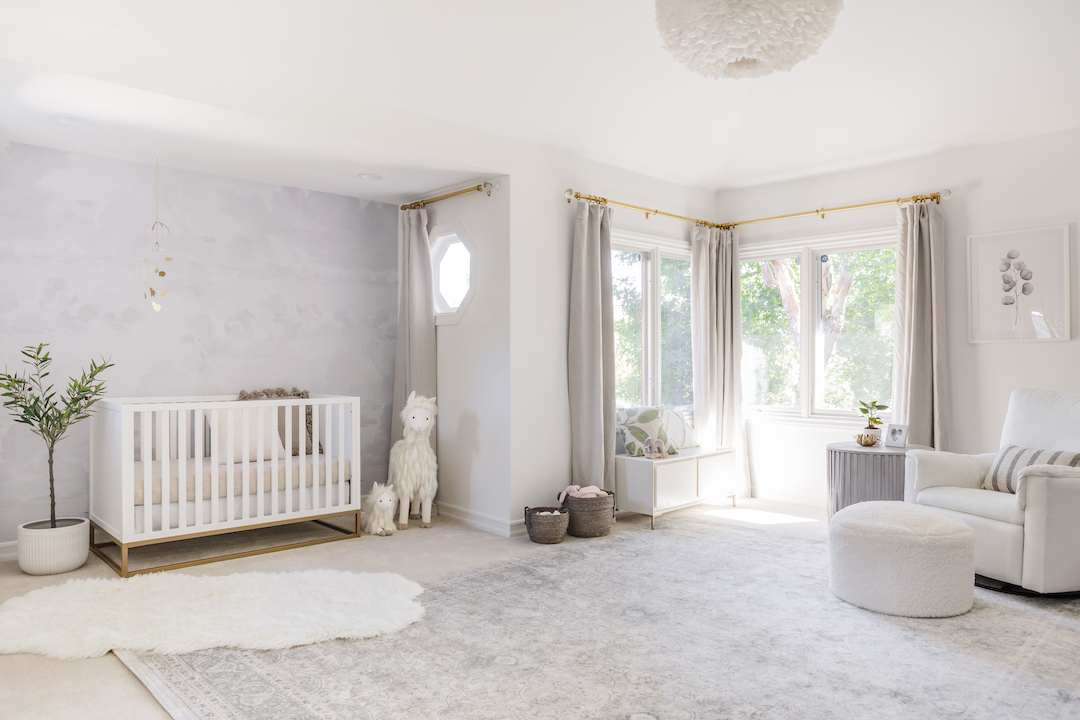Sometimes when I start working with a new client, they show me a favorite piece or sentimental item that they love and want to use as the inspiration for their nursery. They have the inspiration item but don’t know exactly how to create a whole room design around it. This can be anything from an old photograph to a piece of furniture, but either way, it can be daunting to pull a whole space together.
This is a nursery design board that I created around a single piece—the rocking chair. The legs of the chair have a vintage feel in a warm white, so I chose the crib and dresser to flow with that look. The main colors on the fabric are blue and fuchsia, so I chose blue as the main color and fuchsia as an accent color. To pull in the floral pattern on the cushion, I included some other nature-inspired pieces, like the artwork, throw pillow and light fixture.
 Light Fixture | Hanging Planters | Floral Artwork | Crib | Crib Skirt | Blanket | Mirrors | Dresser | Table Lamp | Branch Shelf | Rocking Chair | Ottoman | Side Table | Vase | Throw Pillow | Rug
Light Fixture | Hanging Planters | Floral Artwork | Crib | Crib Skirt | Blanket | Mirrors | Dresser | Table Lamp | Branch Shelf | Rocking Chair | Ottoman | Side Table | Vase | Throw Pillow | Rug
There are a few things that I always consider when I’m using a client’s favorite piece or a sentimental item as the inspiration for a space. Here are my tips on how to design a nursery around a single item.
Choose an item that has a color scheme you like. If your item is orange and yellow but you’ve been envisioning a blue and green nursery, you might consider using that item as an accent and not as the main inspiration piece. You can still showcase the special item in another way, like displayed on a shelf or framed on the wall.
Choose a few colors but not necessarily all of them. If your item is multi-colored, you don’t have to use every color in your nursery. Choose two or three colors, using one as the main color and one or two more as accent colors.
Take inspiration from pattern or texture. If your item has a pattern or texture, you can use that as the inspiration as well. For example, if you have an antique wood cradle, you can use the same wood texture or wood grain in other areas. Or if you have a blanket with butterflies on it, you can use butterflies in other areas of the space.
You don’t have to use the actual item. If you have an item that is sentimental but that isn’t really your style or functional for you, you can still use the idea of it to create a theme. For example, if you have a vintage crib that’s been in your family but may not be safe anymore, you can create a nursery with the same vintage feel using new pieces that will help keep the memory alive. You could even take a photograph of the original crib and display it somewhere in the room.
How have you used special items to inspire your nursery?



